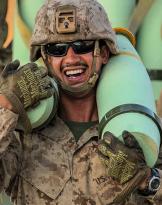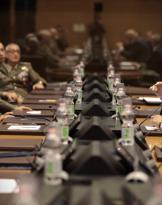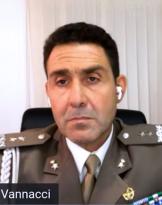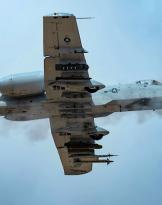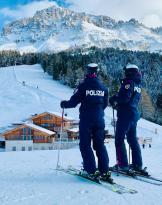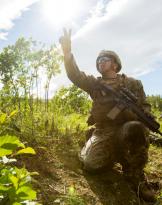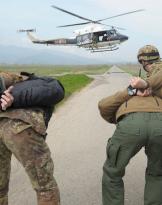The tragic conflicts that have been going on for some time now in some regions of the globe ((in primis), middle-east) have increasingly attracted media attention on the commission, by one or more of the actors involved therein, especially the so-called war crimes, allowing an ever increasing echo to the complaints launched in this regard by the various governments and the various humanitarian associations involved in various ways.
In particular, the focus has increasingly been placed on the violation of the rules of international humanitarian law, with particular reference to the frequent episodes of bombardment of schools and hospitals, the destruction of important archaeological sites and cultural heritage in general, the torture of prisoners ( and much more): a sign of a growing awareness on the subject that, if on the one hand bodes well, on the other must encourage the bodies (public and private) to increasingly spread the relevant laws, so that they are known and, therefore, even more respected (and enforced).
To date, one of the realities (indeed, the reality par excellence) thanks to which this particular branch of international law has developed and spread, is that of the International Red Cross which, from its establishment, which occurred at the end of the 1800, to the present day , can be considered, through the ICRC (International Committee of the Red Cross), the highest authority on the subject.
But first things first.
Meanwhile: what is international humanitarian law?
International humanitarian law constitutes a part of international public law and encompasses the rules that, in times of armed conflict, protect people who do not take, or no longer take part, in hostilities and place limits on the use of means and methods of war .
If it is true that, traditionally, and until a few decades ago, it was also defined right to war, since it addressed the phenomenon of war in the classical sense (ie the war between states), starting from the fifties, instead, it began to prefer the term "armed conflict", because it also embraced those conflicts that, or take place within a state or do not have the characteristics of war in a technical-legal sense (such as, for example, a formal declaration, two or more opposing states, combat between regular forces), thus ending it with being also referred to as the right of armed conflicts.
The origins
 In every civilization and historical epoch, in reality, there have almost always been rules that define the formalities and circumstances to start a war and end it, limit the violence against certain categories of people or places, apply or forbid some fighting methods: as early as the 18th century Code of Hammurabi AC (to the Bible and the Koran) are found rules that impose respect for the adversary, up to the so-called signs of medieval times, stipulated between belligerents in a given conflict, contained provisions relating to the fate of the wounded, prisoners and civilians.
In every civilization and historical epoch, in reality, there have almost always been rules that define the formalities and circumstances to start a war and end it, limit the violence against certain categories of people or places, apply or forbid some fighting methods: as early as the 18th century Code of Hammurabi AC (to the Bible and the Koran) are found rules that impose respect for the adversary, up to the so-called signs of medieval times, stipulated between belligerents in a given conflict, contained provisions relating to the fate of the wounded, prisoners and civilians.
As well as various philosophers and jurists, in every age, they have always been interested in the regulation of conflicts: from Grotius (without going too far in time), according to which it is the natural right to push individuals to unite and to obey some fundamental norms, such as respect for the life and property of others, to be asserted even in war, to Jean-Jacques Rousseau who, in the eighteenth century, affirmed that "War is not a relationship between a man and another man, but a relationship between States, in which individuals are enemies only by chance; not as men, not even as citizens, but only as soldiers (...). Since the object of war is to destroy the enemy state, it will be legitimate to kill its defenders as long as they take up arms; but as soon as they throw them and give up, they cease at that moment to be enemies or agents of the enemy and return to being simply men, for which they have no more right on their life ".
Or, in the aftermath of the 1848 Messina riots, to Ferdinando Palasciano, a young medical officer of the Bourbon army, according to whom "all the warring Powers, in the Declaration of War, should recognize each other the principle of neutrality of the wounded fighters for the whole time of their care and that they would adopt respectively the unlimited increase of the medical personnel during the whole war time.".
Henry Dunant and the International Red Cross: the beginning of the codification of international humanitarian law
Precisely the principles proclaimed by Palasciano, they found form thanks to the work of Henry Dunant, considered fully the founder of the Red Cross. The 8 May 1828 was born in Geneva and in 1843 became part of a group of young people from the Free Church and then, in 1855, founded the Alliance of Christian Youth Unions (YMCA) in Paris. A few years later, a businessman, he went to Algeria and, fascinated by the local culture, he began studying Islam and taking Arabic lessons, founding in 1858 a cereagricola society (the "Mons -Djemila "). Precisely in the attempt (a result often vain) to buy land useful for his activity, and placed in territory at the time of French colonial rule, he decided to go to Lombardy, to speak directly with Napoleon III, who at that time was at the head of his army in favor of Italian independence against the Austrians.
 Just at that time, he broke out in Solferino, the 24 of June 1859, one of the bloodiest battles that Europe had ever lived: Dunant was shocked by the impressive number of wounded and dead, but especially by the fact that they were left to themselves, as he himself testified in the book ("Souvenir de Solferino") that, after the war, and once back in Switzerland, wrote with the intent to raise awareness as much as possible the public opinion about it .
Just at that time, he broke out in Solferino, the 24 of June 1859, one of the bloodiest battles that Europe had ever lived: Dunant was shocked by the impressive number of wounded and dead, but especially by the fact that they were left to themselves, as he himself testified in the book ("Souvenir de Solferino") that, after the war, and once back in Switzerland, wrote with the intent to raise awareness as much as possible the public opinion about it .
To the atrocities of the fight, full of scenes of pain and despair ("Here a melee, horrible, frightening fight takes place; Austrians and Allies are trampled, slaughtered on the bloody corpses, they clash with the butt of their guns, they break their skulls, they gouge themselves with sabers or bayonets; it is a struggle without quarter, a slaughterhouse, a fight of wild beasts, furious and drunk with blood; even the wounded defend themselves until the end: those who no longer have a weapon grabs the opponent's throat, tearing it with his teeth"), Was added the fact that there were no doctors, surgeons and nurses who could alleviate the suffering of the many men who were injured or dying on the battlefield ("The 25 sun lit up one of the most horrendous shows imaginable. The battlefield is covered everywhere with corpses; the streets, the ditches, the ravines, the spots, the meadows are littered with lifeless bodies and the accesses of Solferino are literally punctuated. In countries everything turns into makeshift hospitals: churches, convents, houses, public squares, courtyards, streets, walks."), to the point that it was impossible to provide for them all ("Then there are pitiful scenes like those of the previous day, though of a quite different kind; water and food are not lacking and yet the wounded die of hunger and thirst; there are plenty of lint but not enough hands to apply them to the wounds. It is therefore essential, good or bad, to organize a voluntary service.")
Thus it was that he became aware of the insufficiency of relief in relation to needs ("Therefore, volunteers, diligent and prepared nurses and nurses are needed, initiated to this task, which, officially recognized by the commanders of the armed forces, are facilitated and supported in the exercise of their mission. Finally, in an era in which we talk so much about progress and civilization, seeing that unfortunately wars can not always be avoided, it is not urgent to insist that we try to prevent or at least mitigate the horrors in a spirit of humanity and truth. civilization?") and the duty to create a volunteer rescue company in each state, with the task of organizing and training teams for the assistance of the wounded in war.
In the 1862, he joined the "Geneva Society of Public Utilities" and together with five other Swiss citizens - the jurist Gustave Moynier, the general Henry Dufour and the two doctors Louis Appia and Theodore Maunoir - founded a Labor Commission, the "Geneva Committee of Rescue" of the wounded soldiers ", the first cell of what will become the International Committee of the Red Cross.
 The "Committee of the Five", based on the ideas proposed by Dunant in his book, organized the 26 October 1863, in Geneva, an International Conference, in which eighteen representatives of fourteen countries participate, three days later (the 29 October ), signed the "First Basic Charter", which contained the ten resolutions which, with the purpose of defining the functions and means of the Relief Committees, became the birth act of the Movement.
The "Committee of the Five", based on the ideas proposed by Dunant in his book, organized the 26 October 1863, in Geneva, an International Conference, in which eighteen representatives of fourteen countries participate, three days later (the 29 October ), signed the "First Basic Charter", which contained the ten resolutions which, with the purpose of defining the functions and means of the Relief Committees, became the birth act of the Movement.
The first Geneva Convention
It was in the aftermath of the 1864 war between Prussia and Denmark that, despite the debut of the nascent National Rescue Societies, all the difficulties placed by governments in their work were highlighted (one of them, for example, concerned irreconcilability between allowing the rescue of the wounded and the secret of positions of troops, which could be reported by enemy rescuers once back in their ranks), with the logical consequence that it was necessary, to regulate the whole, a real international treaty.
The latter was concluded the 22 August 1864 (at the end of the Diplomatic Conference attended by representatives of twelve governments, including the United States, the only non-European Power represented) with the adoption of the first "Geneva Convention for the improvement of fate of the wounded in the country ". The document, made up of ten articles, guaranteed neutrality and protection for ambulances and military hospitals, the staff of the health teams and the material used, as well as the civilian population who had worked for the relief of the wounded.
 Thus began the codification of the rules of what, in the years to follow, would become a very important branch of international law, enriched by the Conventions that, over time, had to conclude, on the wave of conflicts that, from that between Austria and Prussia of the 1866, to the two world wars, and to others that plagued the globe in the following years (for example, those of liberation, or the Vietnamese conflict) succeeded one another: among them, the famous four (Conventions) of Geneva (the first, concerning the improvement of the fate of the wounded and the sick of the armed forces in the countryside, the second the improvement of the fate of the wounded, the sick and the shipwrecked of the armed forces on the sea, the third the treatment of prisoners of war, the fourth, the protection of civilians in wartime), the protection of Cultural Heritage in the event of armed conflict in 1954, the two Additional Protocols of 1977 (concerning the protection of ittime of international armed conflicts - the first - and not international - the second -). All this, with the coverage of the one that, pronounced in 1899 by the Estonian diplomat and jurist Fyodor Fyodorovich Martens, would become a fundamental clause of the entire normative corpus in question, according to which, for cases not covered by the conventions of humanitarian law, "the populations and the belligerents remain under the protection and under the rule of the principles of the law of the Gentiles, which result from the established uses among the civilized nations, from the laws of humanity and from the demands of the public consciousness.".
Thus began the codification of the rules of what, in the years to follow, would become a very important branch of international law, enriched by the Conventions that, over time, had to conclude, on the wave of conflicts that, from that between Austria and Prussia of the 1866, to the two world wars, and to others that plagued the globe in the following years (for example, those of liberation, or the Vietnamese conflict) succeeded one another: among them, the famous four (Conventions) of Geneva (the first, concerning the improvement of the fate of the wounded and the sick of the armed forces in the countryside, the second the improvement of the fate of the wounded, the sick and the shipwrecked of the armed forces on the sea, the third the treatment of prisoners of war, the fourth, the protection of civilians in wartime), the protection of Cultural Heritage in the event of armed conflict in 1954, the two Additional Protocols of 1977 (concerning the protection of ittime of international armed conflicts - the first - and not international - the second -). All this, with the coverage of the one that, pronounced in 1899 by the Estonian diplomat and jurist Fyodor Fyodorovich Martens, would become a fundamental clause of the entire normative corpus in question, according to which, for cases not covered by the conventions of humanitarian law, "the populations and the belligerents remain under the protection and under the rule of the principles of the law of the Gentiles, which result from the established uses among the civilized nations, from the laws of humanity and from the demands of the public consciousness.".
The symbol of the International Red Cross, from the 1864 to today: some curiosities
 Originally the Movement had as its sole symbol, that of the Red Cross on a white background: the emblem, devoid of religious significance, was chosen by inverting the federal colors of the Swiss flag, in homage to the host country (the 38 article of the First Convention of Geneva of the 1949, in fact affirms that "In homage to Switzerland, the heraldic sign of the red cross on a white background, formed with the inversion of the federal colors, is maintained as an emblem and hallmark of the health services of the armies"); in the 1876, however, the Ottoman Empire (present-day Turkey) raised some objections, and communicated to the Swiss government (depositary, in fact, the Geneva Convention) the intention not to use the symbol of the cross, considering it offensive in against Muslim soldiers. To preserve the unity of the movement, the International Committee took note of the decision and allowed the use of the Red Crescent which, in 1929, was officially recognized as another symbol and adopted by the majority of Islamic countries.
Originally the Movement had as its sole symbol, that of the Red Cross on a white background: the emblem, devoid of religious significance, was chosen by inverting the federal colors of the Swiss flag, in homage to the host country (the 38 article of the First Convention of Geneva of the 1949, in fact affirms that "In homage to Switzerland, the heraldic sign of the red cross on a white background, formed with the inversion of the federal colors, is maintained as an emblem and hallmark of the health services of the armies"); in the 1876, however, the Ottoman Empire (present-day Turkey) raised some objections, and communicated to the Swiss government (depositary, in fact, the Geneva Convention) the intention not to use the symbol of the cross, considering it offensive in against Muslim soldiers. To preserve the unity of the movement, the International Committee took note of the decision and allowed the use of the Red Crescent which, in 1929, was officially recognized as another symbol and adopted by the majority of Islamic countries.
Later it was Iran that made a Leo and Sun Rossi - symbols of Persia added - to the list of protective emblems (in fact, the previously mentioned article 38 continues: "However, for countries that already employ a distinctive sign, instead of the red cross, the red crescent or the red lion and sun on a white background, these emblems are also permitted in the case of this Convention."), Although the latter - to date - has not been used in practice by the 1980.
In any case, in the 2005, a new symbol has been provided (through a special Protocol), the Red Crystal (red symbol on white field) just as an alternative to the red cross and crescent, to offer protection to people who help in areas of conflict, do not want to use the aforementioned symbols.
 The role of the International Committee of the Red Cross and Red Crescent in the dissemination of international humanitarian law
The role of the International Committee of the Red Cross and Red Crescent in the dissemination of international humanitarian law
The movement today is made up of the International Committee of the Red Cross (based in Geneva), the International Federation of Red Cross and Red Crescent Societies and the one hundred and ninety individual national companies. The ICRC, on the basis of the Geneva Conventions of the 1949 and the additional protocols of the 1977, is responsible for preserving and promoting international humanitarian law, protecting and assisting the victims of international armed conflicts, unrest and internal violence.
The role of the Italian Red Cross in the diffusion of international humanitarian law
The Italian Red Cross Society is currently one of the most active in the dissemination of international humanitarian law: through a special office (coordinated by National Commission for the Dissemination of International Humanitarian Law and the Fundamental Principles of the Red Cross), it promotes courses, information days, round tables, conferences and seminars "ad hoc", both within the association itself (with particular regard to access courses for new volunteers), and external to it (including Armed Forces, bodies public and private, Universities, schools, NGOs), with important and prestigious collaborations, for example with the Institute of International Law of San Remo or other national societies.
Annually, it trains its instructors through a national course (this year it has reached its thirty-seventh edition), lasting two weeks, which is accessed through careful selection, whose training includes the study and the study of the main themes in this regard, always with particular attention to the most current problems.
Current and future challenges
Today, the road ahead for insiders is still very long and uphill, especially in the face of new challenges to which the regulatory data must follow: the reference is, among other things, to the so-called "Non State Actors" ( which often escape a precise legal framework and, consequently, operational on a military level) and to the "war on terrorism"(Which really seems to be - according to the American doctrine - worldwide and permanent: the thought runs from the destruction of the Twin Towers in the 2001, to the recent attack in Barcelona), to the cyber-war, at "targeted killings " and the use of APR (Remote Piloted Aircraft: the so-called drones).
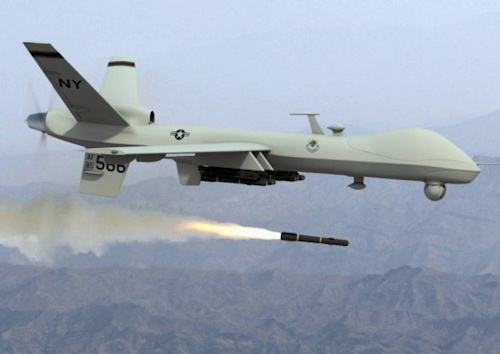
Without considering the different adherence to the rules of international humanitarian law which, unfortunately, still hesitate to be respected in all latitudes, making sure that conflicts are even more asymmetric with respect to their already so oriented connotation, with all that follows in point of (application of) law.
On the other hand, however, it is undeniable that, to date, important steps have been taken, if only a certain Clausewitz is believed to be, even though he claims that "It is clear that if civilized peoples do not kill prisoners, they do not destroy cities and villages, this derives from the fact that intelligence plays a major part in the conduct of war and has revealed to them the existence of means of effective than those resulting from the brutal manifestations of instinct", Did not hesitate to define the right in the war as"impossible".
As the current general commander of the Arma wrote, gen. Tullio Del Sette, in the preface to the book by Ferdinando Fedi ("Pietro Verri, Pioneer of Humanitarian Law"), dedicated to the figure of the one who, precisely, and rightly so, is considered the pioneer of international humanitarian law (Pietro Verri) in Italy, "the difference between before and after (he) and those who with him in Humanitarian Law have believed as precursors and for which they have worked, in their countries and in international organizations, is that such aberrations have been identified and so stigmatized as to have a their prediction in international law and can therefore give rise to appropriate sanctions": The reference is to the other great achievement achieved by the international community in this area, namely the establishment of an International Criminal Court, before which it can refer those guilty of war crimes and, more generally, of violations international humanitarian law. What then often does not happen, it is equally true. But this is another story ...
Even with these new challenges, in spite of everything, one must look with renewed optimism, in the belief that humanitarian law can succeed more and more in what, perhaps, has always been its only and romantically presumptuous purpose: that is, paraphrasing S. Agostino, that of "to teach human beings also by doing war".



